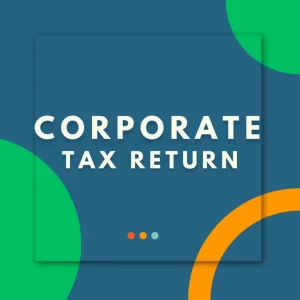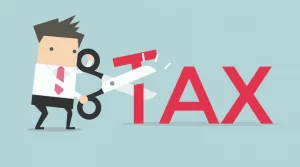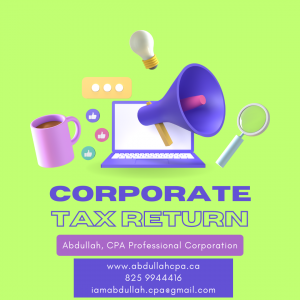This article will dive into the following topics on Shareholder Loan CRA:
- What is a shareholder loan?
- How a shareholder loan is used
- What your shareholder loan balance means
- What does a shareholder loan on the balance sheet look like?
- Shareholder loan tax problems with CRA
- How to avoid tax problems
What is a Shareholder Loan?
In general, your shareholder loan represents the balance of funds that you have contributed to the corporation. Or on the flip side, it also represents the funds that you have withdrawn from the company.
You can loan money to your company by way of a shareholder loan or borrow money from your corporation through the shareholder loan.
You might also know it as “Due to Shareholder” or “Due from Shareholder”, but the basic premise is the same.
You may be using your shareholder loan now without knowing how it works or why it’s being used. It’s quite common for bookkeepers and accountants to record transactions to a business owner’s shareholder loan account without the business owner realizing.
For example, the bookkeeper might assume that an e-transfer out of your bank account is a shareholder withdrawal when it’s really a payment to a contractor.
If this isn’t caught, then it means more tax for the corporation because of a missed expense. It also means more tax for the shareholder because the withdrawal would be treated as personal income!
This is one of the many reasons why it’s a good idea to learn when and how shareholder loans are used.
If this doesn’t make much sense yet, that’s ok. Keep reading and it will become clear.
How a Shareholder Loan is Used
Now that we understand what a shareholder loan is, let’s look at common ways it is used.
Owner Cash Withdrawal
An owner withdrawing money from a corporation is the most basic example for how a shareholder loan is used. If the withdrawal is not designated as a dividend or a salary, it creates a loan from the corporation to the shareholder.
A bookkeeper or accountant might also call this a “due from shareholder” transaction because the loan amount is due from the shareholder to the company.
Purchase of a Personal Item with Company Funds
Another common version of an owner withdrawal is when a shareholder purchases a non-business item using company funds.
Let’s pretend Paul wants a new 65” TV for his condo so he goes out to Best Buy to find one. While paying for his $2,500 TV, he “accidently” uses his Abdullah CPA Credit Card.
In this case we wouldn’t call this an employee gift, so it would be a personal (non-business) item purchased using company funds.
We’ll give Paul the benefit of the doubt and say that it was a mistake. The purchase would then be recorded to Paul’s shareholder loan account as a $2,500 loan from the company to Paul. The funds would then need to be repaid to Abdullah CPA.
If Paul doesn’t repay the funds, then it’s likely he will have to include the $2,500 in his personal income for the year. He would then have to pay personal income tax on that $2,500 even though received a TV instead of cash in the first place.
You can also think of this transaction as:
- Paul borrows $2,500 from the company
- Then Paul uses that $2,500 to buy a TV for himself
In either case, he’s borrowed $2,500 from the company and the transaction would be recorded as a debit to the shareholder loan account.
Owner Cash Contribution
If a shareholder of a company deposits some of his own funds into the company to cover expenses, this is an owner contribution. This means that the shareholder has loaned the company this cash and the company will need to pay him back at some point.
A bookkeeper or accountant might also call this a “due to shareholder” transaction because the amount loaned to the company is now due back to the shareholder.
For example, Abdullah CPA ran out of cash on Thursday and needed to cover Abdullah CPA’s $10,000 payroll on Friday. In this scenario, Paul could deposit $10,000 of his own cash into the bank account to cover payroll.
This deposit would be recorded as a credit to Paul’s shareholder loan, meaning the company owes Paul $10,000.
Assuming Abdullah CPA received a large payment from a client the following week, Paul could repay himself by withdrawing funds from the corporate bank account. Alternatively, Paul could leave the loan balance as $10,000 owing to him for as long as was necessary.
It’s pretty common to see a due to shareholder balance (funds owed to the shareholder) for early stage companies. This just means that the owner is funding the business until it can cover its own expenses.
Pay for Business Expense with Personal Funds
Another common version of an owner contribution is when company expenses are paid with personal funds of the shareholder.
In this scenario, Joe is out for beer with a prospective client. If he paid for beer with his personal credit card, the purchase would be recorded to Joe’s shareholder loan account as a loan from Joe to the company.
He would then expect to be reimbursed for the meals and entertainment expense.
In this example, there aren’t any transactions that show up in the corporate bank account. All we have is a receipt that Joe provides to the bookkeeper. The receipt shows that the $80 expense was paid using Joe’s personal credit card.
The bookkeeper would record the transaction as:
- Debit meals and entertainment expense $80 (no GST/HST just for this example)
- Credit Joe’s shareholder loan $80
Joe could reimburse himself for the $80 right away by taking money from the corporate account. Or, he could leave the balance on the books until a later date when he wants to be repaid.
What Your Shareholder Loan Balance Means
Your shareholder loan balance refers to the running total of all shareholder loan transactions at any given time.
Shareholder Loan “Debit Balance”
If you withdraw money from your company, the amount you owe increases. This is often referred to as a shareholder loan debit balance or due from shareholder.
Your accountant will likely talk to you about this and refer to the balance you owe as a “debit balance”. It’s also often represented as a positive number within the accounting ledger. An example of a shareholder loan account ledger showing a “debit balance” could look like this.

The $2,500 balance on August 8th is a debit balance, meaning that the shareholder owes the company $2,500.
Shareholder Loan CRA “Credit Balance”
If you deposit more money than you borrow, the balance changes so that the company actually owes you money. This is typically called a shareholder loan “credit balance” or due to shareholder.
An example of a shareholder loan account ledger showing a “credit balance” could look like this.

The negative $7,500 balance on August 11th shows that the company now owes the shareholder $7,500. This is the shareholder loan “credit balance”.
Abdullah CPA Bookkeeping Services
If you’re not sure what your shareholder loan balance is, it may be because things are falling through the cracks on the bookkeeping side.
It sounds a bit over the top but we truly love bookkeeping and we’ve put a lot of thought into our systems, processes and pricing.
If you’re curious about working with Abdullah CPA, contact us.
Shareholder Loan on a Balance Sheet
Your shareholder loan balance will appear on your balance sheet as either an asset or a liability.
It is considered to be a liability (payable) of the business when the company owes the shareholder. You’ll see it as an asset (receivable) of the business when the shareholder owes the company.
Shareholder Loan Debit Balance (AKA Due from Shareholder)
The shareholder loan account will appear as an asset on the balance sheet when the shareholder owes the company money.
This is called a shareholder loan “debit balance” or due from shareholder.
In the shareholder loan debit balance example above, Paul owes the company $2,500 so the shareholder loan balance will show up as an asset on the balance sheet.

This means that Paul could pay back the company the $2,500 to repay the loan. Or, as often is the case, he could take it as personal income in the form of a dividend.
Shareholder Loan Credit Balance (AKA Due to Shareholder)
The shareholder loan account will appear as a liability on the balance sheet when the company owes the shareholder money.
This is called a shareholder loan “credit balance” or due to shareholder.
In the shareholder loan credit balance example above, the company owed Paul $7,500 so the shareholder loan balance will show up as a liability on the balance sheet.

For tax purposes, this is a safe situation for Paul to be in. He can withdraw $7,500 from the company as a loan repayment and not have to include those funds in his personal income for the year.
Paul could also leave the shareholder loan credit balance in place for as long as he likes. The company will still owe him money until it’s repaid and there are no negative tax consequences. The only issue is that Paul might actually want that money back sooner than later!
In the next section we’ll look at potential shareholder loan situations that can cause tax problems with CRA.
Shareholder Loan Problems with CRA
Tax problems can arise when companies make loans to shareholders over a period of more than a year.
For example, if a shareholder withdrew $60,000 from his company and didn’t pay it back for more than a year, CRA might consider that loan to be personal income to the shareholder. So far that sounds fair; the shareholder earned $60,000 as personal income and paid tax on that amount.
However, in this case, CRA does not allow the company to deduct that $60,000 like they could if it was paid as a salary. This means that there is double taxation on the $60,000 – not good.
CRA does allow for a personal tax deduction in a subsequent year if the loan is then repaid, but this may not be the most tax efficient scenario.
How to Avoid Shareholder Loan CRA Tax Problems
There are a few straightforward ways to avoid the double taxation mentioned above. These include:
- Repaying the loan
- Taking the cash as a salary or wage
- Taking the cash as a dividend
It is helpful to understand the difference between salaries and dividends for this part, but not 100% necessary.
Regardless of method used, it is important that the loan is properly documented. This could include any terms of repayment in a written agreement or other documentation such as a corporate resolution.
Repaying the Loan
The simplest but probably least fun way of avoiding tax problems is to repay the loan. If the shareholder repays the loan within one year, he won’t have to pay tax personally on those funds.
You might be thinking “great! I’ll just repay the loan before the end of the year and borrow it again shortly after.” CRA wasn’t born yesterday; they have rules in place that take these situations into account. CRA considers this a series of loans and repayments and the double taxation could still occur.
Repaying the loan permanently before the end of the year will help avoid the tax problem. However, it also means that the shareholder doesn’t get to use the cash for a new TV and a trip to Hawaii.
Taking the Funds as a Salary
An owner of a corporation can also be an employee of the company. If the owner wants to earn $60,000 from his company and avoid double taxation, he could take the funds as a salary or wage (same thing).
The salary would act as a tax deduction for the company and the owner would include it in his employment income. This avoids double taxation. One catch here is that payroll deductions would need to be withheld which means that the owner would receive less than $60,000 in his bank account.
Perhaps Mexico instead of Hawaii?
Taking the Funds as a Dividend
The owner of the company could also avoid double taxation by taking the $60,000 as a dividend. A dividend would be declared and the owner would transfer the cash into his personal account.
Dividends are taxed at lower rates than employment income so double taxation is avoided in this scenario.
One thing to consider with dividends is that the shareholder would not need to pay source deductions when taking the cash. That sounds good, but it is very likely that he would owe taxes when filing his tax return. Proper planning will help avoid a surprise tax bill in April.
Generally there is little difference in total tax paid when comparing salary or dividends.
Shareholder Loan Frequently Asked Questions
When does a shareholder loan have to be repaid?
The general guideline is that the shareholder loan should be repaid to the company within the next fiscal year after the loan was made.
For example, let’s assume Abdullah CPA’s fiscal year-end is December 31st. If Paul borrows $7,500 from the company on August 11, 2022 then he should pay it back by December 31, 2023 (the end of the next fiscal year).
If Paul doesn’t repay the loan, this could result in the $7,500 being included in his personal income in the year that the loan was made (2022 in this case).
If you’re thinking that Paul could just repay the loan on December 31, 2023 and then take the cash again on January 1, 2024, you’re not alone. CRA is wise to this and there are rules in place that prevent shareholders from doing this. The repayment must not be considered to be made as part of a series of loans and repayments.
How do I record a shareholder withdrawal in the books?
A shareholder withdrawal could be recorded a few different ways depending on the intent of the transaction.
If the shareholder is borrowing money from the company, the transaction would be recorded as:
- Dr. Shareholder Loan
- Cr. Cash
If the shareholder withdrawal is meant to be a cash dividend paid to the shareholder, it would be recorded as:
- Dr. Dividends
- Cr. Cash
If the shareholder is being paid as an employee, the simple version of the transaction would be:
- Dr. Wages expense
- Cr. Cash
There is a bit more to recording wages than this, but this is the basic idea.
How do I record cash loaned to the company by a shareholder?
Cash loaned to the company by a shareholder would be posted to the shareholder loan account and the bank account. The transaction would look like this:
- Dr. Cash
- Cr. Shareholder Loan
How do I repay my shareholder loan?
It’s easy to repay a shareholder loan if you owe money to your company. The simplest way is to just transfer cash from your personal bank account to the corporate bank account.
You could also write a cheque to your company if you happen to have a cheque book. There are many payment methods that you could use to repay your shareholder loan, but the idea is to just put the funds back into the company account.
What is a shareholder advance?
A shareholder advance typically refers to funds that a shareholder has loaned to the corporation.
We would typically see this on the company’s balance sheet as a liability – the company owes the shareholder.
What is the purpose of a shareholder loan?
A shareholder loan is an agreement to borrow funds from your corporation for any purpose. The purpose of the loan could be because the shareholder needs the cash to buy something like a house or a car for example.
The idea is that the shareholder loan is temporary. It would need to be repaid to the company within the following fiscal year or could be included in the shareholder’s personal income for the year that the loan was made.
What type of account is a shareholder loan cra account?
A shareholder loan account is a balance sheet account. It can be either an asset or a liability. It may also be shown as either a current or long-term account, depending on the situation.
Shareholder Loan CRA Balance Sheet Examples
- Current Liability – If the company owes the shareholder funds and expects to repay them within one year.
- Current Asset – If the shareholder owes the company funds and expects to repay them within one year.
- Long-term Liability – If the company owes the shareholder funds and does not expect to repay them within the upcoming year.
- Long-term Asset – If the shareholder owes the company funds and does not expect to repay them within the upcoming year.
Is a shareholder loan considered debt?
In most cases, funds borrowed from a company through a shareholder loan is considered a debt of the shareholder. If the company borrows money from the shareholder, then it would be considered a debt of the company.
Conclusion
Shareholder loans can be a useful way to manage short-term personal cash needs. They also allow shareholders more flexibility in how and when cash is withdrawn from a company.
If you are just needing a short-term loan for less than a year, a shareholder loan could be an easy way to obtain the funds. The loan could be repaid within the year to avoid having to include the amount in your personal income.
Or if repayment isn’t possible, a dividend could be issued you would pay personal tax on the amount at a reduced rate.
CPA in Toronto
CPA in Mississauga
Tax Accountant in Mississauga






